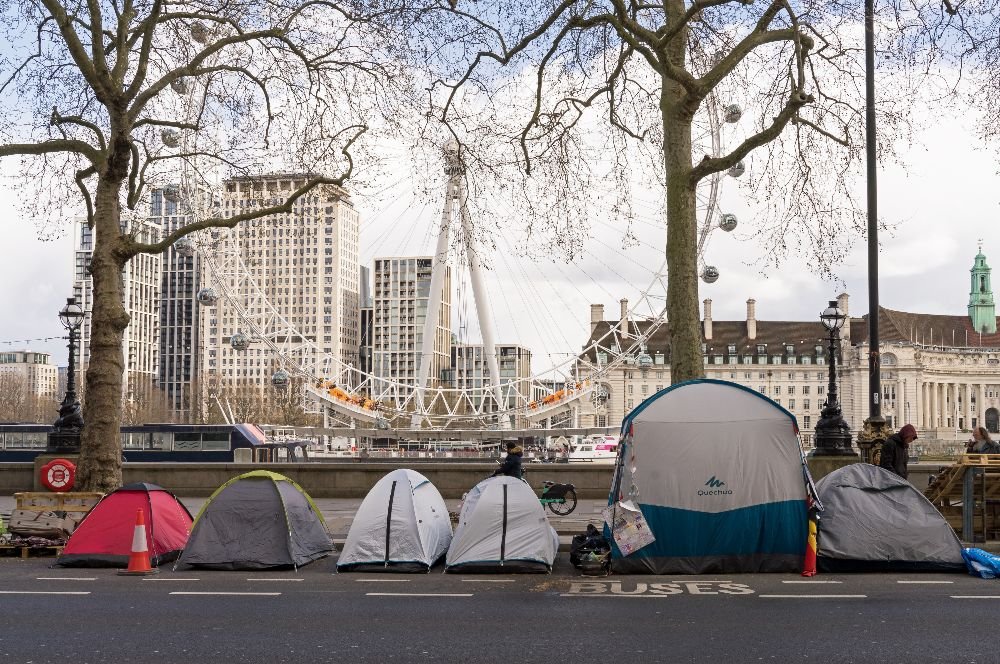Homelessness services on the brink of collapse as rents continue to soar
In new data from London Councils, it reported to the All Party Parliamentary Group (APPG) for London in July that 1 in 50 Londoners are currently in Temporary Accommodation arranged by their local council.
This includes children as, on average, at least one child in every classroom across London is homeless.
In the meeting for London’s housing affordability crisis on 17 July 2023, the APPG heard that housing is becoming increasingly unaffordable for many of the city’s population. This is not news to those struggling to afford their rent, as well as those in the frontline providing
housing services to those across our capital. Homelessness and housing advice charities are being pushed to the limit. Demand for their services are coming from not only struggling Londoners but also local authorities. Councils are scrambling to find suitable homes for their ever-growing waiting lists as more people are being made homeless. Those on these lists are often left waiting for years.
But how has this increase happened?
Post-lockdown, the Private Rented Sector (PRS) has seen a major shrink in the number of properties available, yet a massive hike in demand. In a study conducted alongside the London School of Economics (LSE), real estate company Savills reports that the number of advertisements for rentals has fallen by 41% since lockdown in 2020. Additionally, tenancy turnover is becoming longer. With fewer social homes available to families, more and more households have had to enter the PRS. Consequently, tenants are now staying in their rentals for much longer, and is yet another contributing factor to declining availability.
As a result, rents have soared; asking rent has increased by 20% since March 2020 and adds to the pressure with rising living costs. As many as 423,000 Londoners rely on Local Housing Allowance (LHA) to afford their rent. Yet LHA rates have been frozen since April 2020 while rents have skyrocketed.
Subsequently, many families have been unable to cope with increased housing costs, and have had to turn to their local council for help. London Councils, representing 32 London boroughs and the City of London, surveyed local authorities to get a bigger picture of the housing crisis’ impact on Londoners. It estimates that 166,000 Londoners are currently living in temporary accommodation. This is roughly equal to the population of cities such as Blackburn or Oxford. It stated that this homelessness crisis is “worst ever experienced in the past 20 years in terms of housing availability and affordability”, and that Government intervention is imperative.
Candida Thompson, Assistant Director of Housing Supply and Options at Newham Council, noted in the July meeting that local authorities usually would not place families and pregnant women in B&Bs unless the case constitutes an emergency. However, due to the shortage of suitable temporary accommodation, councils have little choice. Legally, there is a 6-week limit for families placed in B&B accommodation.
Data for April 2023 showed that the total number of households in temporary accommodation facilitated by local authorities was up by 5.7% compared to April 2022. The number of households in B&Bs has increased by 110%, with 781% staying for longer than the legal 6-week limit (1,287 families in total across 29 councils).
Without a doubt, these statistics paint a bleak picture for Londoners and those wishing to move to the big city. But the Government can and should take action to alleviate pressures on both homelessness services and tenants.
A plethora of charities and local authorities are calling on the Government to not only raise LHA rates to match sky-high rents, but also strengthen and pass the Renters’ Reform Bill for private renters. We must do more to ensure that private renters have security of tenancy and affordable rent costs, as private renting is no longer a second choice for many living in London.
As Director of Generation Rent Ben Twomey noted, under Section 21, a renter will be arbitrarily evicted every 15 minutes. New data shows that between April and June this year, 2,228 households were evicted under Section 21 and is a 41% increase compared to the same period in 2022. The Renters’ Reform Bill demonstrates that this is contribution to the rate of homelessness is entirely preventable.
There are no simple solutions to ending the housing and homelessness crisis. But it is also not inevitable. We must continue to demand that the Government not delay the action they can and must take to fulfil their promises to 11 million private renters.
Sources:
1. https://www.bbc.co.uk/news/uk-england-london-66387577
2. https://www.londoncouncils.gov.uk/sites/default/files/APPG%20for%20London%20-%20Housing%20Affordability%20%2817.07.23%29%20Minutes_0.pdf
3. https://beta.londoncouncils.gov.uk/news/2022/londons-housing-affordability-crisis-set-cause-homelessness-spike
4. https://www.lse.ac.uk/business/consulting/reports/unlocking-the-benefits-and-potential-of-build-to-rent
5. https://www.londoncouncils.gov.uk/members-area/member-briefings/housing-and-planning/private-rented-sector-supply-london
6. https://www.bigissue.com/news/housing/thousands-of-tenants-lose-homes-to-no-fault-evictions-as-wait-for-renters-reform-bill-goes-on/
7. https://www.onlondon.co.uk/london-parliamentarians-told-homelessness-services-close-to-collapse/
8. https://www.generationrent.org/2023/07/13/renters-evicted-every-15-minutes-this-summer-as-government-delays-outlawing-unfair-evictions/
9. https://www.onlondon.co.uk/london-housing-crisis-becoming-an-emergency-as-supply-falls-and-rents-soar/
Image credit: Travers Lewis/Shutterstock

